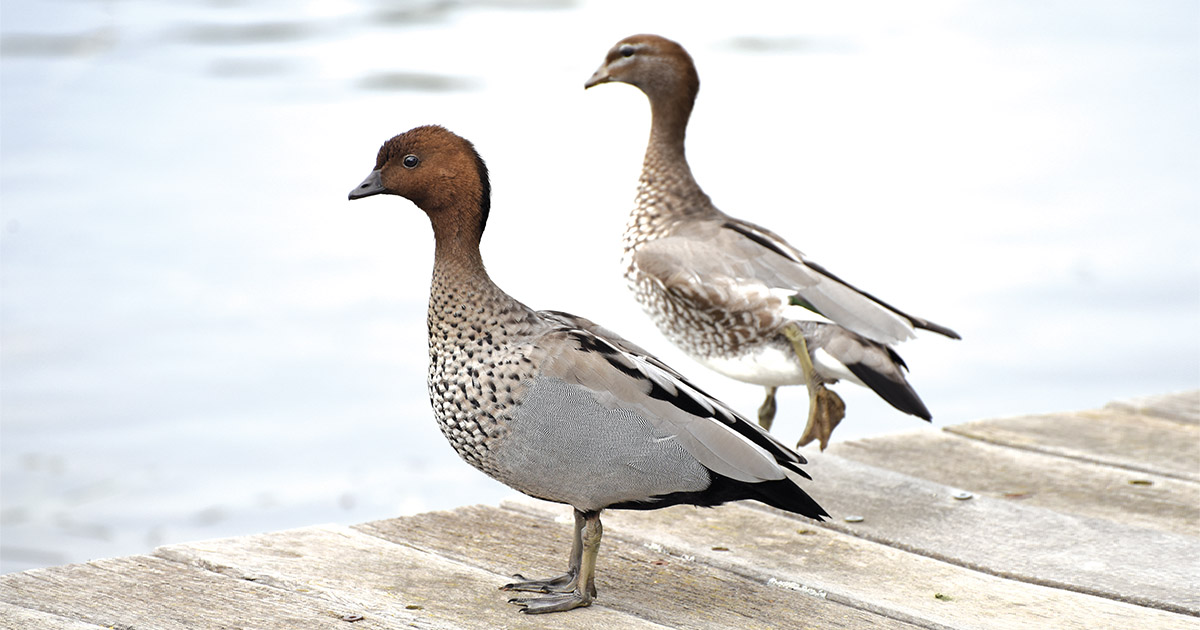
By Karlene Brummer
I have lost count of the number of times I have come close to wiping out an entire family of wood ducks over the past month or so.
Luckily, so far this has not occurred, and I am now quite vigilant about really slowing down whenever I see a group on the side of the road. They tend to just ‘bolt’ across when you least predict it – so I have adopted the mantra of ‘expect the unexpected’!
THE AUSTRALIAN WOOD DUCK:
The Australian Wood Duck, scientifically known as Chenonetta jubata, is one of the continent’s most recognisable waterfowl, frequenting wetlands, parks, and open grasslands across most of Australia.
The Australian Wood Duck is distinct from other duck species. Adults are medium-sized, measuring about 45 to 51 centimetres in length. The male typically has a dark brown head with a slight crest at the back – leading to the alternative name of ‘Maned Duck’ – with a mottled grey body, while the female is slightly plainer, showing a lighter face with characteristic white stripes running above and below the eye. Both sexes have a pale grey underside, and their wings reveal a contrasting patch when in flight.
Habitat and Distribution
Extremely adaptable, the Australian Wood Duck is found throughout much of the country, except for the driest deserts and deep tropical rainforests. Its preferred habitat includes grassy woodlands, wetlands, lakeshores, and even urban parks and golf courses.
Unlike many other ducks, the Australian Wood Duck is not strictly aquatic. While it frequents bodies of water, it spends a significant amount of time grazing on land. (Especially at the sides of roads!)
Australian Wood Ducks are primarily herbivorous feeding on grasses, clover, and other vegetation, and occasionally aquatic insects.
Breeding and Nesting
Breeding season occurs mainly from September to November but may vary depending on rainfall and local conditions. These ducks are monogamous, often forming long-lasting pair bonds. Females lay their eggs in tree hollows, often some distance from water. After hatching, the ducklings make a daring leap from the nest to the ground, guided by the gentle calls of their parents, before making their way to water.
Conservation and Human Interaction
Currently, the Australian Wood Duck is listed as a species of Least Concern, in part to its adaptability and widespread distribution. Its comfort in human-altered environments, such as farmland, parks, and golf courses, has allowed its population to remain stable, if not increasing in some areas. Nevertheless, as with all wildlife, habitat preservation remains crucial for its long-term well-being. So watch out – Ducks about!
Staying Alert For Wood Ducks!








